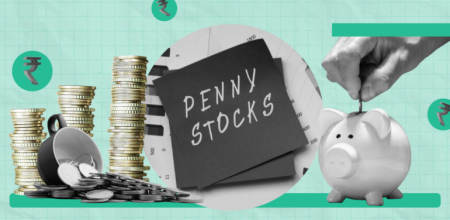The Petrol Puzzle: Why Bhutan Sells It Cheaper Than India (Even Though They Buy It From Us)
India is the source of petrol and diesel for Bhutan. Yet, when you cross the Indo-Bhutan border, you’ll find Bhutanese fuel stations selling petrol at ₹64 per litre and diesel at ₹58–60 per litre. On the Indian side of the border, the same litre costs ₹95 to ₹105.
The result? Long queues of Indian vehicles lining up at Bhutan’s border towns just to fill tanks and save thousands of rupees every month. This is not just a funny meme—it is one of the biggest paradoxes of India’s fuel economy.
How Much Does India Give to Bhutan?
India supplies all of Bhutan’s fuel needs—petrol, diesel, LPG, and kerosene. Every drop that runs through Bhutanese cars, buses, or factories comes from India. India refines it, exports it to Bhutan, and still sells the same fuel to its own citizens at double the price.
- Petrol in Bhutan: ₹63–65/litre
- Diesel in Bhutan: ₹58–60/litre
- Petrol in India: ₹95–105/litre
- Diesel in India: ₹88–98/litre
So Indians are paying ₹30–40 more per litre compared to the Bhutanese, even though the fuel originates here.
Border Reality: Where Indians Save Big
At several Indo-Bhutan border points, you’ll see a strange sight—long queues of Indian cars, bikes, and trucks waiting patiently at Bhutanese petrol pumps. Why? The savings are too big to ignore.
🛻 Phuentsholing (Bhutan) – Jaigaon (West Bengal, India)
- Petrol in Bhutan: ~₹64
- Petrol in Jaigaon, WB: ~₹103
- Savings per litre: ₹39
A car with a 40-litre tank saves over ₹1,500 in a single fill.
🚙 Samdrup Jongkhar (Bhutan) – Assam border
- Petrol in Bhutan: ~₹64
- Petrol in Assam: ~₹98
- Savings per litre: ₹34
Truckers crossing the border fill up in Bhutan to save ₹3,000–4,000 per trip.
🚗 Gelephu (Bhutan) – Assam border
- Same story. Every day, Indian commuters and traders cross into Bhutan for fuel.
- Bhutanese pumps near Gelephu openly see more Indian number plates than Bhutanese ones.
Why This Price Gap Exists
- Taxation Jungle in India
- More than 50% of what we pay at the petrol pump is tax.
- Central excise duty, state VAT, cess—layer after layer.
- Bhutan does not slap these taxes. They import at wholesale price, add minimal local charges, and pass it on to citizens.
- India’s Dependence on Fuel Taxes
- Petrol and diesel are one of the biggest cash cows for the government.
- Every time you fill ₹1,000 worth of fuel, around ₹500–550 goes directly into government coffers.
- The Russia Factor
- India has been buying crude oil from Russia at huge discounts after sanctions.
- Global crude is currently much cheaper than it was 10–15 years ago.
- Back in 2012–2013, when crude touched $110–120 per barrel, petrol was still cheaper in India (₹70–75).
- Now crude is cheaper (around $80 and sometimes less), yet petrol is ₹100+.
This means the benefit of cheap imports is not reaching the common man.
The GST 2.0 Miss
Recently, India announced GST 2.0 reforms and slashed GST on many essential goods and services. Health insurance, food items, and home appliances saw relief. But petrol and diesel were left out.
Why?
Because if petrol comes under GST, the maximum rate can be 28%. That would slash pump prices by ₹25–30 per litre overnight. But governments (both Centre and states) are addicted to fuel taxes. If GST is applied, they’ll lose lakhs of crores in easy revenue.
Shocking Revelations
- India supplies petrol to Bhutan, but Indians pay double.
- Fuel taxes make up over half the price you pay at Indian pumps.
- Even with discounted crude from Russia, petrol prices don’t fall.
- GST reforms left petrol and diesel untouched, proving how dependent the system is on this revenue.
- Indian drivers in border states save thousands by filling tanks inside Bhutan.
What If Petrol and Diesel Enter GST?
If tomorrow petrol and diesel are brought under GST:
- Petrol could drop to ₹70–75 per litre.
- Diesel could fall to ₹60–65 per litre.
- Transport costs across India would shrink, making food, goods, and essentials cheaper.
- Inflation would ease, giving relief to the middle class.
But the political cost? Governments would lose massive tax income, and they don’t want to give up this easy money.
Final Thought
Bhutan is not “cheating the system.” They are simply passing on the benefits of low taxation to their people. India, on the other hand, is milking its citizens dry with endless taxes on fuel.
The next time you see cars queuing up at the Bhutan border to fill cheap petrol, remember this: the fuel isn’t cheaper because Bhutan is magical—it’s cheaper because India taxes its own people into the ground.
Until petrol and diesel come under GST, Indians will keep paying sky-high prices, no matter how cheap crude gets globally. The truth is simple: we are not paying for fuel, we are paying for politics.
👉 Nishani-style closer: Shouldn’t the real “Atmanirbhar Bharat” begin with affordable petrol for its own people, before exporting it cheap to neighbors?



